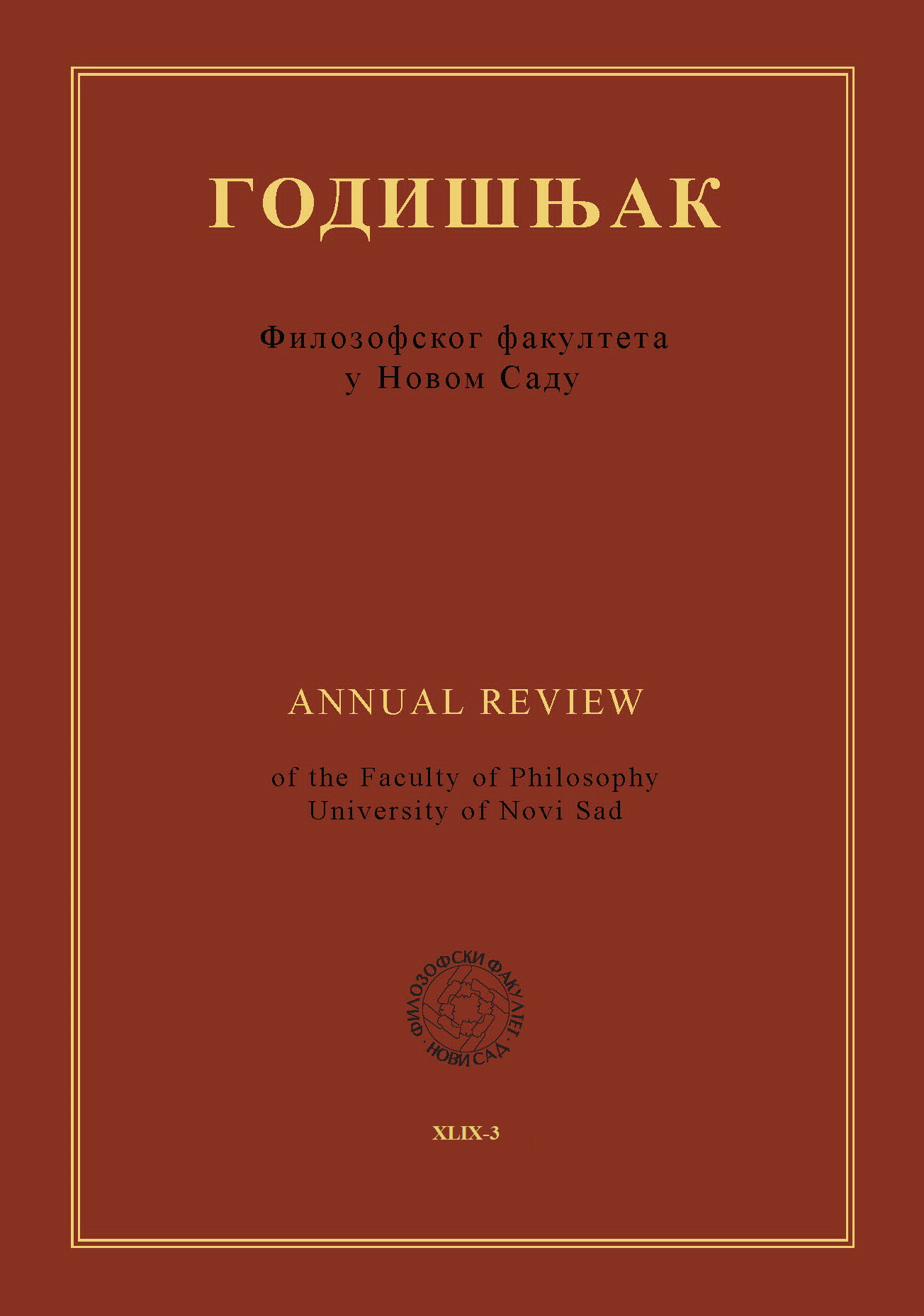THE DISCURSIVE AND SOCIAL FUNCTIONS OF CONDOLENCES AND CONGRATULATIONS IN MEDIEVAL DIPLOMATIC DISCOURSE
Main Article Content
Abstract
In this article we analyzed aspects of expression of condolences and congratulations in a diplomatic discourse from the Middle Ages. Precisely, we analyzed the manifestation of these two speech acts in an epistolary corpus compiled in Dubrovnik in the first half of the 15th century. For the purpose of this article, we take into consideration letters in which these speech acts manifest. The primary hypothesis of the research is that the expression of condolences and congratulations belongs to an apparatus of diplomatic communication schemes and that they represent a social and political ritual whose scope is the maintenance of diplomatic relations. In order to verify the veracity of the hypothesis, we conducted a qualitative analysis of selected paragraphs. That is, we analyzed rhetorical, structural and social aspects of said speech acts. With that goal in mind, we adapted Austin and Searle’s speech act theory and Brown and Levinson’s politeness theory. The analysis reveals that condolences and congratulations perform a social and diplomatic role that manifests in the maintenance of good relations, and that their sincerity is dubious. Future research in the field will concern the analysis of a larger corpus and other speech acts with the goal of determining other specificities of diplomatic discourse from that time.
Downloads
Article Details

This work is licensed under a Creative Commons Attribution-ShareAlike 4.0 International License.
References
Austin, J. L. (1962). How to Do Things with Words. Oxford: Oxford University Press.
Banfi, E. (2017). Italiano e altre varietà italo-romanze in Europa e nel Mediterraneo nel secolo XIX. Firenze: Cesati.
Bertucelli Papi, M. (2000). Is a diachronic speech act theory possible?. Journal of Historical Pragmatics, 1, 57–66. DOI: https://doi.org/10.1075/jhp.1.1.06ber
Brown, P. & Levinson, S. (1987). Politeness: Some Universals in Language Usage. Cambridge: Cambridge University Press. DOI: https://doi.org/10.1017/CBO9780511813085
Camargo, M. (2006). Ars dictaminis. In Sloane, T. O. (2006). Encyclopedia of Rhetoric. Oxford: Oxford University Press. 60-61.
Dardano, M. (2005). Nuovo manualetto di linguistica italiana. Bologna: Zanichelli.
Elwood, K. (2004a). I’m so sorry: A cross-cultural analysis of expressions of condolence. The Cultural Review, 24, 101–126.
Elwood, K. (2004b). “Congratulations”: A cross-cultural analysis of responses to another’s happy news. The Cultural Review, 25, 355-386.
Filipović, E. (2017). Bosansko kraljevstvo: Historija srednjovjekovne bosanske države. Sarajevo: Mladinska knjiga.
Havrylyshyn, O. & Srzentić, N. (2015). Institutions Always 'Mattered': Explaining Prosperity in Mediaeval Ragusa (Dubrovnik). New York: Palgrave Macmillan. DOI: https://doi.org/10.1057/9781137339782
Issacs, E. A. & Clark, H. H. (1990). Ostensible invitations. Language in Society, 19(4), 493-509. DOI: https://doi.org/10.1017/S0047404500014780
Jacobs, A. & Jucker, H. A. (1995). The Historical Perspective in Pragmatics. In Jucker, H. A. (1995). Historical Pragmatics. Amsterdam/Philadelphia: John Benjamins. 3-33. DOI: https://doi.org/10.1075/pbns.35.04jac
Jucker, H. A. (2000). English historical pragmatics: Problems of data and methodology. In Di Martino, G. & Lima, M. (2000). English diachronic pragmatics. Napoli: CUEN. 17-55.
Jucker, A. H. (2008). Historical pragmatics. Language and Linguistics, 2/5, 894–906. DOI: https://doi.org/10.1111/j.1749-818X.2008.00087.x
Lalić, A. (2022). Modulazione delle congratulazioni in un corpus epistolare del Medioevo. Italica Belgradensia 2022, 1, 167-184. DOI: https://doi.org/10.18485/italbg.2022.1.9
Leech, G. (2014). The Pragmatics of Politeness. Oxford: Oxford University Press. DOI: https://doi.org/10.1093/acprof:oso/9780195341386.001.0001
Makri-Tsilipakou, M. (2001). Congratulations and Bravo!. In: Bayraktaroğlu, A. & Sifianou, M. (ed.) (2001). Linguistic politeness across boundaries: the case of Greek and Turkish. Amsterdam/Philadelphia: John Benjamins. 137-176. DOI: https://doi.org/10.1075/pbns.88.07mak
Morady Moghaddam, M. (2012). Discourse Structures of Condolence Speech Act. Journal of English Language Teaching and Learning, 10, 105-125.
Mwihaki, A. (2004). Meaning as use: A functional view of semantics and pragmatics. Swahili Forum, 11 (1), 127-139.
Sarri, A. (2018). Material Aspects of Letter Writing in the Graeco-Roman World: 500 BC – AD 300. Berlin/New York: Mouton de Gruyter. DOI: https://doi.org/10.1515/9783110426953
Searle, J. R. (1969). Speech Acts: An Essay in the Philosophy of Language. Cambridge: Cambridge University Press. DOI: https://doi.org/10.1017/CBO9781139173438
Searle, J. R. (1976). A Classification of Illocutionary Acts. Language in Society, 5, 1-23. DOI: https://doi.org/10.1017/S0047404500006837
Searle, J. R. (1979). Expression and Meaning Studies in the Theory of Speech Acts. Cambridge: Cambridge University Press. DOI: https://doi.org/10.1017/CBO9780511609213
Tadić, J. (1935). Pisma i uputstva Dubrovačke Republike. Beograd: Srpska kraljevska akademija.
Tasso, T. (1959). La letteratura italiana: storia e testi. Volume 22. Torquato Tasso - Prose. Verona: Riccardo Riccardi editore.
Zovko, V. (2014). Metode i tehnike komunikacije između vlasti i poslanika u pregovorima oko proširenja dubrovačkih granica. Anali Dubrovnik, 52(1), 21–49. DOI: https://doi.org/10.21857/9e31lh40qm




